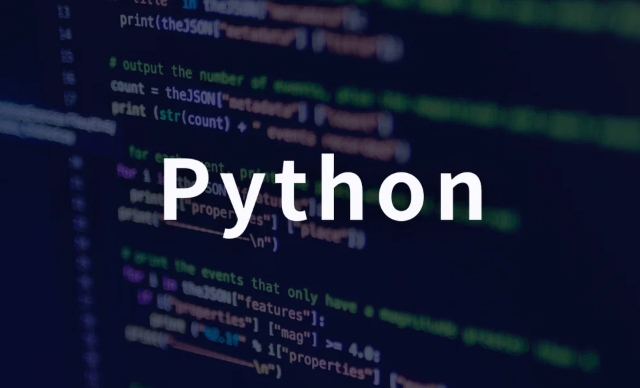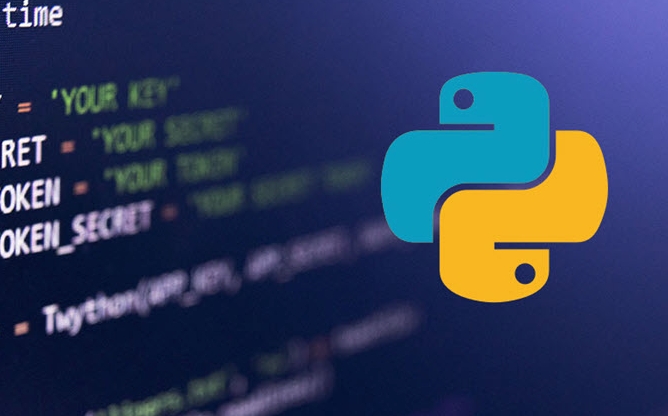Implementing Secure File Operations in Python
The key to safe file operations in Python is to prevent problems such as path traversal, improper permission control, and unsafe temporary file processing. Specific suggestions include: 1. Use os.path.normpath or pathlib.Path.resolve() to normalize the path and limit the scope of the operation directory; 2. Use the tempfile module to create temporary files to avoid manually splicing file names and set appropriate permissions; 3. Use os.chmod() and os.chown() to control file permissions and ownership to prevent sensitive information leakage; 4. Read large files line by line or block, and use a context manager to ensure timely release of resources, thereby reducing potential risks.

The key to safe file operations in Python is to avoid common security vulnerabilities, such as path traversal, improper permission control, and unsafe temporary file processing. Although Python provides strong file processing capabilities, it may pose serious security risks if used improperly. Below are some practical suggestions to help you write safer file operation code in daily development.

Avoid Path Traversal attacks (Path Traversal)
Path traversal attacks usually occur when the user input controls the file path, such as the user uploads files, downloads files, or reads logs. If the input is not cleaned up, the attacker may read sensitive files through paths such as ../../etc/passwd .
suggestion:

- Use
os.path.normpathorpathlib.Path.resolve()to normalize the path. - Restrict file operations in specified directories, such as using
os.path.commonprefix()orpathlib.Path.relative_to()to ensure that the path does not exceed the expected range.
from pathlib import Path
base_dir = Path("/safe/base/dir").resolve()
user_path = Path("/safe/base/dir/../etc/passwd").resolve()
if base_dir in user_path.parents:
# Safe operation else:
raise ValueError("Path outside the allowable range")Create temporary files safely
If temporary files are improperly processed, they may be accessed or tampered with by other users, resulting in information leakage or race condition attacks.
suggestion:

- Use
TemporaryFileorNamedTemporaryFileintempfilemodule. - Do not splice temporary file names manually, avoid using fixed file names or predictable naming methods.
- Set appropriate permissions (such as only allowing the current user to read and write).
import tempfile
with tempfile.NamedTemporaryFile(delete=True, mode='w') as tmpfile:
tmpfile.write("some data")
# Files are automatically deleted after exiting with blockControl file permissions and ownership
When writing sensitive data, data breaches may result if appropriate permissions are not set. For example, the log file is read by a normal user, or the configuration file is modified.
suggestion:
- Use
os.chmod()to set appropriate permissions (such as0o600means that the owner is only read and write). - If running on a Unix-like system, consider setting the correct owner with
os.chown(). - Avoid running scripts with root permissions unless necessary.
import os
with open("sensitive_data.txt", "w") as f:
f.write("secret info")
os.chmod("sensitive_data.txt", 0o600) # Only allow owner to read and writeAvoid memory overflow when processing large files
Although it is not an immediate security issue, if you do not pay attention to the method when handling large files, it may cause the program to crash or even be exploited by the attacker to exploit resources.
suggestion:
- Read line by line or use chunked reading to avoid loading the entire file at once.
- Use the context manager (
with open(...)) to ensure that the file is closed in time. - For uploading files, limit the maximum size to avoid DoS attacks.
def read_large_file(file_path):
with open(file_path, 'r') as f:
for line in f:
process(line) # Replace with actual processing logicBasically that's it. Python's file operation is powerful, but security details are easily overlooked. As long as you pay more attention to path processing, temporary files, permission control and resource management, the potential risks can be greatly reduced.
The above is the detailed content of Implementing Secure File Operations in Python. For more information, please follow other related articles on the PHP Chinese website!

Hot AI Tools

Undress AI Tool
Undress images for free

Undresser.AI Undress
AI-powered app for creating realistic nude photos

AI Clothes Remover
Online AI tool for removing clothes from photos.

Clothoff.io
AI clothes remover

Video Face Swap
Swap faces in any video effortlessly with our completely free AI face swap tool!

Hot Article

Hot Tools

Notepad++7.3.1
Easy-to-use and free code editor

SublimeText3 Chinese version
Chinese version, very easy to use

Zend Studio 13.0.1
Powerful PHP integrated development environment

Dreamweaver CS6
Visual web development tools

SublimeText3 Mac version
God-level code editing software (SublimeText3)
 python connect to sql server pyodbc example
Jul 30, 2025 am 02:53 AM
python connect to sql server pyodbc example
Jul 30, 2025 am 02:53 AM
Install pyodbc: Use the pipinstallpyodbc command to install the library; 2. Connect SQLServer: Use the connection string containing DRIVER, SERVER, DATABASE, UID/PWD or Trusted_Connection through the pyodbc.connect() method, and support SQL authentication or Windows authentication respectively; 3. Check the installed driver: Run pyodbc.drivers() and filter the driver name containing 'SQLServer' to ensure that the correct driver name is used such as 'ODBCDriver17 for SQLServer'; 4. Key parameters of the connection string
 python httpx async client example
Jul 29, 2025 am 01:08 AM
python httpx async client example
Jul 29, 2025 am 01:08 AM
Use httpx.AsyncClient to efficiently initiate asynchronous HTTP requests. 1. Basic GET requests manage clients through asyncwith and use awaitclient.get to initiate non-blocking requests; 2. Combining asyncio.gather to combine with asyncio.gather can significantly improve performance, and the total time is equal to the slowest request; 3. Support custom headers, authentication, base_url and timeout settings; 4. Can send POST requests and carry JSON data; 5. Pay attention to avoid mixing synchronous asynchronous code. Proxy support needs to pay attention to back-end compatibility, which is suitable for crawlers or API aggregation and other scenarios.
 Optimizing Python for Memory-Bound Operations
Jul 28, 2025 am 03:22 AM
Optimizing Python for Memory-Bound Operations
Jul 28, 2025 am 03:22 AM
Pythoncanbeoptimizedformemory-boundoperationsbyreducingoverheadthroughgenerators,efficientdatastructures,andmanagingobjectlifetimes.First,usegeneratorsinsteadofliststoprocesslargedatasetsoneitematatime,avoidingloadingeverythingintomemory.Second,choos
 SQLAlchemy 2.0 Deprecation Warning and Connection Close Problem Resolving Guide
Aug 05, 2025 pm 07:57 PM
SQLAlchemy 2.0 Deprecation Warning and Connection Close Problem Resolving Guide
Aug 05, 2025 pm 07:57 PM
This article aims to help SQLAlchemy beginners resolve the "RemovedIn20Warning" warning encountered when using create_engine and the subsequent "ResourceClosedError" connection closing error. The article will explain the cause of this warning in detail and provide specific steps and code examples to eliminate the warning and fix connection issues to ensure that you can query and operate the database smoothly.
 python shutil rmtree example
Aug 01, 2025 am 05:47 AM
python shutil rmtree example
Aug 01, 2025 am 05:47 AM
shutil.rmtree() is a function in Python that recursively deletes the entire directory tree. It can delete specified folders and all contents. 1. Basic usage: Use shutil.rmtree(path) to delete the directory, and you need to handle FileNotFoundError, PermissionError and other exceptions. 2. Practical application: You can clear folders containing subdirectories and files in one click, such as temporary data or cached directories. 3. Notes: The deletion operation is not restored; FileNotFoundError is thrown when the path does not exist; it may fail due to permissions or file occupation. 4. Optional parameters: Errors can be ignored by ignore_errors=True
 How to execute SQL queries in Python?
Aug 02, 2025 am 01:56 AM
How to execute SQL queries in Python?
Aug 02, 2025 am 01:56 AM
Install the corresponding database driver; 2. Use connect() to connect to the database; 3. Create a cursor object; 4. Use execute() or executemany() to execute SQL and use parameterized query to prevent injection; 5. Use fetchall(), etc. to obtain results; 6. Commit() is required after modification; 7. Finally, close the connection or use a context manager to automatically handle it; the complete process ensures that SQL operations are safe and efficient.
 Python for Data Engineering ETL
Aug 02, 2025 am 08:48 AM
Python for Data Engineering ETL
Aug 02, 2025 am 08:48 AM
Python is an efficient tool to implement ETL processes. 1. Data extraction: Data can be extracted from databases, APIs, files and other sources through pandas, sqlalchemy, requests and other libraries; 2. Data conversion: Use pandas for cleaning, type conversion, association, aggregation and other operations to ensure data quality and optimize performance; 3. Data loading: Use pandas' to_sql method or cloud platform SDK to write data to the target system, pay attention to writing methods and batch processing; 4. Tool recommendations: Airflow, Dagster, Prefect are used for process scheduling and management, combining log alarms and virtual environments to improve stability and maintainability.
 python psycopg2 connection pool example
Jul 28, 2025 am 03:01 AM
python psycopg2 connection pool example
Jul 28, 2025 am 03:01 AM
Use psycopg2.pool.SimpleConnectionPool to effectively manage database connections and avoid the performance overhead caused by frequent connection creation and destruction. 1. When creating a connection pool, specify the minimum and maximum number of connections and database connection parameters to ensure that the connection pool is initialized successfully; 2. Get the connection through getconn(), and use putconn() to return the connection to the pool after executing the database operation. Constantly call conn.close() is prohibited; 3. SimpleConnectionPool is thread-safe and is suitable for multi-threaded environments; 4. It is recommended to implement a context manager in combination with context manager to ensure that the connection can be returned correctly when exceptions are noted;







